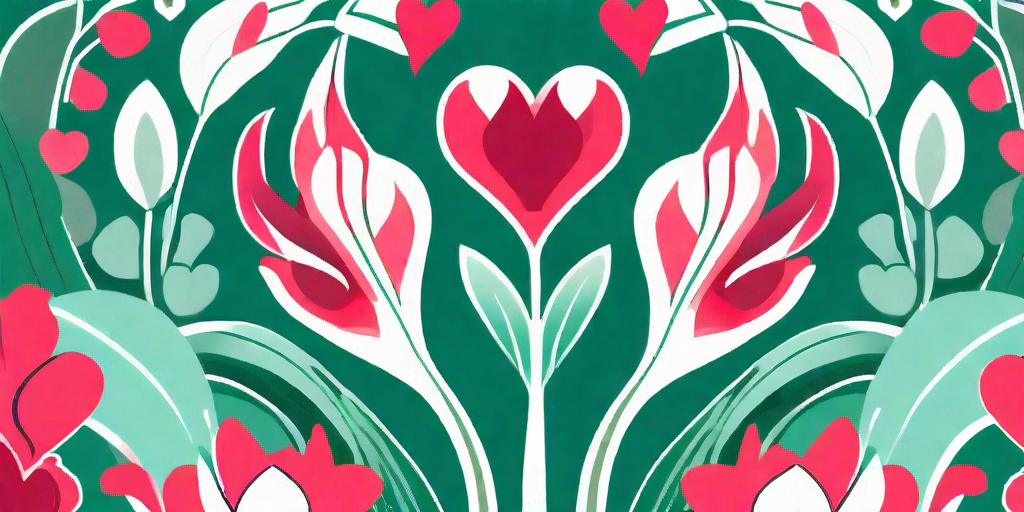
Welcome, dear reader, to the enchanting world of the Bleeding Heart Flower. This is not just any flower, mind you. It's a flower with a tale as captivating as its name, and a beauty that could make a rose blush. So, sit back, relax, and let's dive into the fascinating story of this botanical wonder.
The Origin of the Bleeding Heart Flower
Our story begins in the Far East, specifically in Japan, China, and Korea. It was here that the Bleeding Heart Flower, scientifically known as Lamprocapnos spectabilis, first sprouted its roots. This perennial plant is a member of the Papaveraceae family, which, if you're not a botanist, is just a fancy way of saying it's related to poppies.
But how did it get its dramatic name? Well, if you take a gander at the flower, you'll see that it's shaped like a heart with a drop of blood descending from it. Hence, the name 'Bleeding Heart'. It's a bit morbid, we know, but hey, who are we to argue with Mother Nature?
The Symbolism of the Bleeding Heart Flower
Now, let's delve into the symbolism of this unique flower. In the language of flowers, the Bleeding Heart stands for deep emotions and desire. It's often used to express feelings of love, especially unrequited love. So, if you're looking to make a grand romantic gesture, this flower might just be your ticket.
But be warned, the Bleeding Heart also symbolizes a warning or a rejection. It's like nature's way of saying, "Hey, I like you, but let's take things slow". So, if you're planning to use this flower, make sure you're sending the right message.
How to Grow and Care for Bleeding Heart Flowers
Planting
Now, let's get down to the nitty-gritty: how to grow your own Bleeding Heart Flower. First things first, these flowers prefer shady to semi-shady areas. So, find a spot in your garden that gets morning sun and afternoon shade. They also prefer well-drained soil, so make sure your chosen spot isn't waterlogged.
When it comes to planting, you'll want to plant the roots about 2 inches deep and 2 feet apart. This will give your flowers plenty of room to grow and spread out. And remember, patience is a virtue. It may take a few weeks for your flowers to sprout, but trust us, it's worth the wait.
Caring
Once your flowers have sprouted, it's time to start caring for them. This involves regular watering, especially during dry spells. But be careful not to overwater, as this can lead to root rot. A good rule of thumb is to water when the top inch of soil is dry.
Bleeding Heart Flowers are also big fans of compost. So, sprinkle some around the base of the plant in the spring to give it a nutrient boost. And don't forget to prune any dead or dying foliage to keep your plant looking its best.
FAQs about the Bleeding Heart Flower
- Are Bleeding Heart Flowers poisonous?
Yes, they are. So, keep them out of reach of pets and children.
- Do Bleeding Heart Flowers attract wildlife?
Yes, they do. They're particularly popular with hummingbirds.
- How long do Bleeding Heart Flowers bloom?
They typically bloom in late spring and can continue blooming throughout the summer.
Conclusion
And there you have it, the fascinating story of the Bleeding Heart Flower. From its origins in the Far East to its deep symbolism and growing tips, we've covered it all. So, the next time you see this unique flower, you'll know just how special it is.
Now, go forth and share your newfound knowledge with the world. Or better yet, start growing your own Bleeding Heart Flowers. After all, who wouldn't want a garden full of love and desire?















